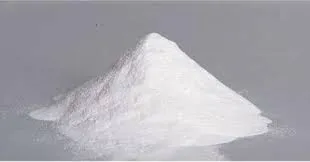
Қар . 26, 2024 12:32 Back to list
Viscosity Characteristics and Applications of Hydroxyethyl Cellulose in Various Industries
Hydroxyethyl Cellulose Viscosity Understanding Its Importance and Applications
Hydroxyethyl cellulose (HEC) is a non-ionic, water-soluble polymer derived from cellulose, a fundamental organic compound present in plant cell walls. HEC possesses unique properties that make it valuable in various industries, particularly in pharmaceuticals, cosmetics, food production, and construction. One of the most critical characteristics of HEC is its viscosity, which plays a vital role in determining its suitability for different applications. This article delves into the importance of HEC viscosity, its measurement, and its diverse applications.
The Nature of Hydroxyethyl Cellulose
HEC is synthesized by ethylene oxide reacting with cellulose derivatives. This modification enhances the polymer's solubility in cold water compared to other cellulose derivatives. The hydroxyethyl groups introduce hydrophilic characteristics, making HEC an invaluable thickening agent in aqueous solutions. The degree of substitution, or the number of hydroxyethyl groups introduced, directly correlates with the viscosity properties of HEC.
Measuring Viscosity
Viscosity refers to the resistance of a fluid to flow. In the context of HEC, viscosity is a crucial parameter that affects how effectively it can act as a thickener, stabilizer, or emulsifier. Viscosity is typically measured using rheometers or viscometers, which can provide a precise assessment of a polymer's flow behavior under different conditions. HEC can exhibit a range of viscosities depending on its molecular weight, concentration in solution, and temperature. In general, higher molecular weight and concentration lead to increased viscosity.
Importance of Viscosity in Applications
hydroxyethyl cellulose viscosity

1. Pharmaceuticals In the pharmaceutical industry, HEC is often used as a thickening agent in ointments, gels, and various liquid formulations. The viscosity of HEC determines the flow characteristics of these formulations, impacting their efficacy and patient compliance. Higher viscosity in topical formulations can enhance the product's ability to adhere to the skin and provide sustained release of active ingredients.
2. Cosmetics The cosmetic industry capitalizes on HEC's ability to modify viscosity and texture. Lotions, creams, and hair gels often incorporate HEC to achieve desired rheological properties. For instance, a thicker formulation may provide better sensory attributes and enhance the consumer's experience. Here, the viscosity also influences the stability of emulsions, ensuring uniform distribution of active components.
3. Food Industry In food production, HEC serves as a thickening and stabilizing agent in various products, including sauces, dressings, and dairy items. The viscosity of HEC directly impacts mouthfeel, texture, and overall product quality. As a safe food additive, HEC allows manufacturers to create low-fat or low-calorie alternatives without compromising the sensory experience.
4. Construction In the construction sector, HEC is used in mortars, cements, and other building materials to improve workability and performance. Its viscosity helps control water retention and adjust the flow properties of cement mixtures, ensuring better adhesion and surface finish.
5. Personal Care Products HEC is also commonly found in personal care products such as shampoos and conditioners. The viscosity impacts foam formation, product spreadability, and overall performance, influencing consumer satisfaction.
Conclusion
The viscosity of hydroxyethyl cellulose is a fundamental characteristic that dictates its effectiveness across various applications in multiple industries. Understanding how to manipulate HEC's viscosity allows manufacturers to tailor products that meet specific performance criteria, enhancing user experience and product quality. Whether in pharmaceuticals, cosmetics, food, or construction, the versatility of hydroxyethyl cellulose continues to make it a crucial ingredient in modern formulations. As research and development in polymer science progresses, the applications and benefits of HEC are likely to expand further, reinforcing the significance of viscosity in enhancing product functionality.
-
Versatile Hpmc Uses in Different Industries
NewsJun.19,2025
-
Redispersible Powder's Role in Enhancing Durability of Construction Products
NewsJun.19,2025
-
Hydroxyethyl Cellulose Applications Driving Green Industrial Processes
NewsJun.19,2025
-
Exploring Different Redispersible Polymer Powder
NewsJun.19,2025
-
Choosing the Right Mortar Bonding Agent
NewsJun.19,2025
-
Applications and Significance of China Hpmc in Modern Industries
NewsJun.19,2025







